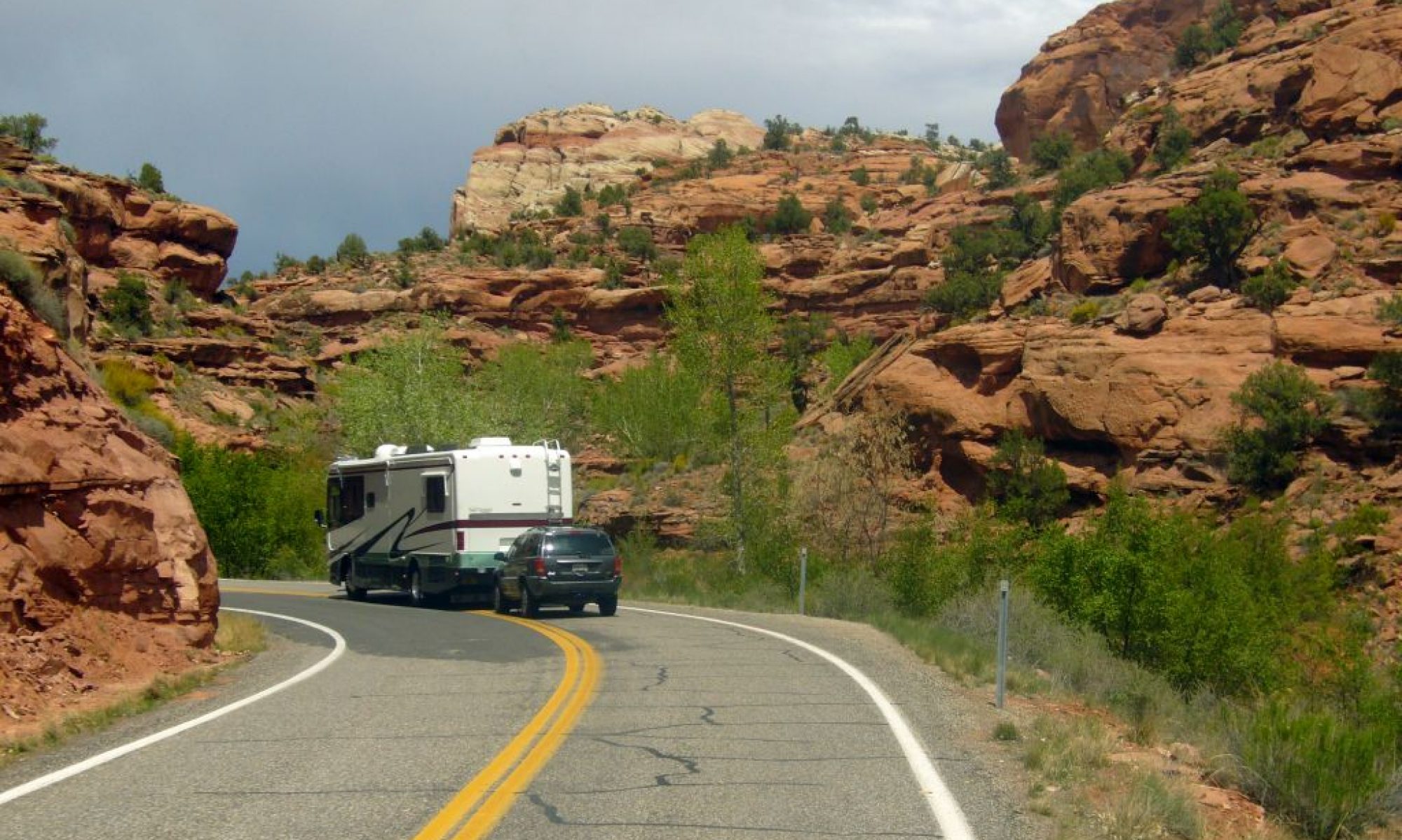Inverter
An inverter produces 120V electricity from 12V batteries. On the AC side, an inverter sits between the incoming 120V line from the pedestal and the 120V circuits on board the RV. It automatically detects when shore power fails or is disconnected, and seamlessly switches the RV 120V circuits to the output of the inverter.
Other times you’d use an inverter would be to power the 120V appliances while driving down the road, or when boondocking.
How big an inverter and how many batteries you need can be calculated by adding the ‘watts’ or ‘KW” rating on the appliances you might use. Inverters installed in RVs are likely to be rated at 1500W, 2000W or 3000W. In rare cases, a 4000W inverter may be found.
One caveat – practically speaking, air conditioners will not run off the inverter because of their high current draw,
Batteries and battery types
Battery demands for running an inverter are typically high current for extended periods. This means that batteries will be deeply discharged and recharged daily. Batteries designed for this type of service are called deep cycle batteries, and are typically designed for golf cart use.
Deep cycle batteries come in different configurations. 8 volt batteries used on some golf carts wouldn’t be used on an RV, because a multiple of 6 volts is needed to produce 12 volts.
A pair of GC2 6V golf cart batteries are connected in series to produce 12V, and multiple pairs of series-connected 6V batteries are connected in parallel to provide higher capacity.
L-16 batteries are a taller version of GC2 golf cart batteries, and have a higher capacity. Like GC2, L-16 batteries are used in series-connected pairs to produce 12V.
Less frequently seen on RVs are 8D deep cycle batteries. These are big and very heavy.
Battery chemistry may be wet cell/lead acid, AGM (absorbed glass mat), or lithium. All 3 types of battery will require an appropriate charger to recharge after they’ve been deep cycled. Chargers are usually multi-stage, reducing the charging current as the battery charge rises. The final stage will usually be a ‘float’ or ‘trickle’ charge to maintain a battery in a fully charged state.
Recharging the batteries will usually require a 120V source to power the battery charger. This may be provided by a generator or shore power (next time you hook up).
Battery monitor
Many RVs have some form of battery monitor installed to let you know the state of change of separate battery banks. If not, a monitor can easily be installed.
Solar
Some RVs have one or more solar panels on the roof to help maintain charged batteries.
Battery maintenance
Wet-cell batteries require periodic checking and top-up of water levels. Be sure to use distilled water.

